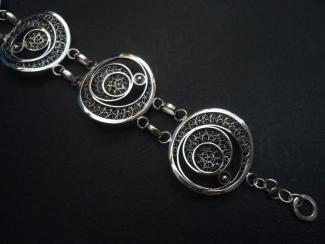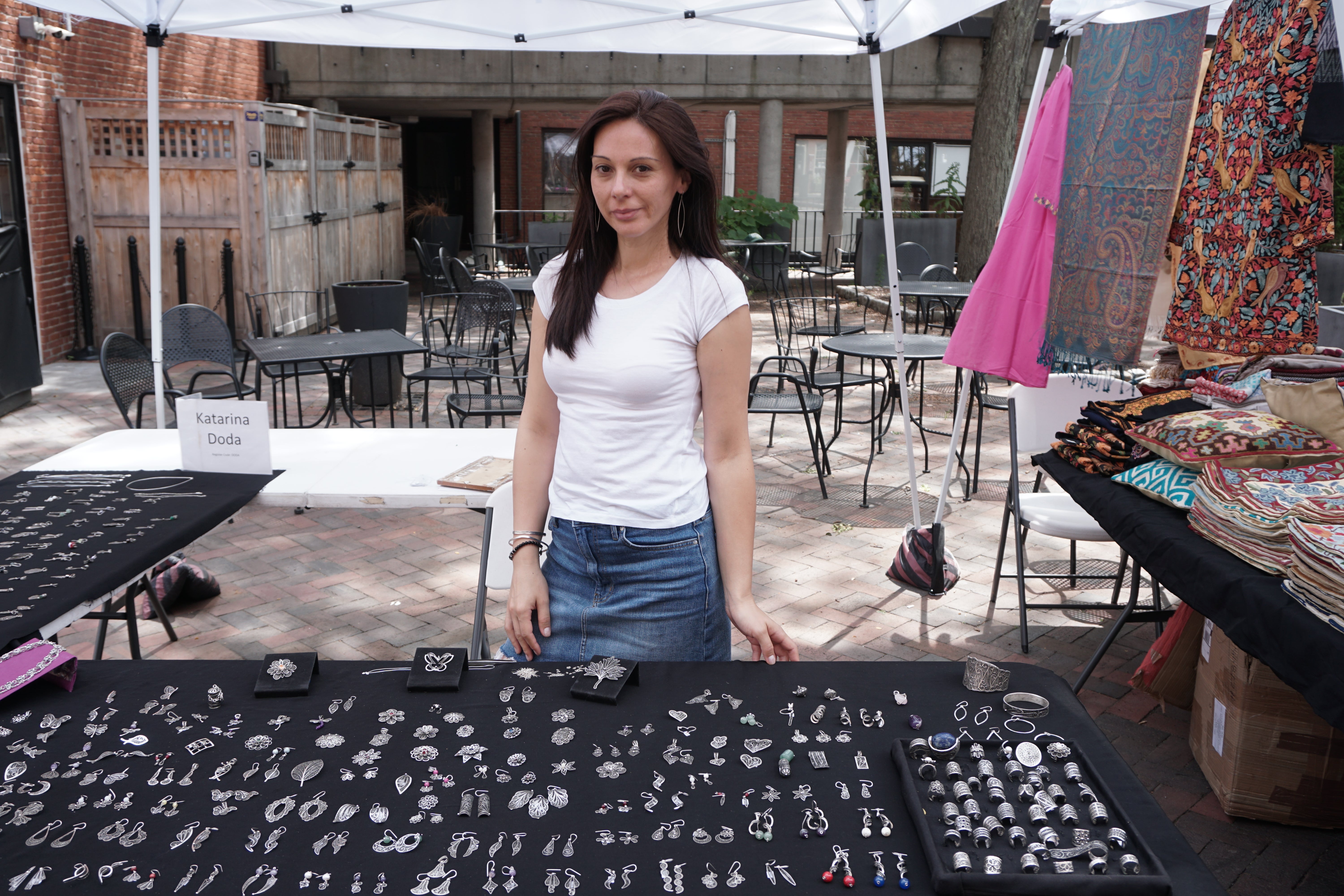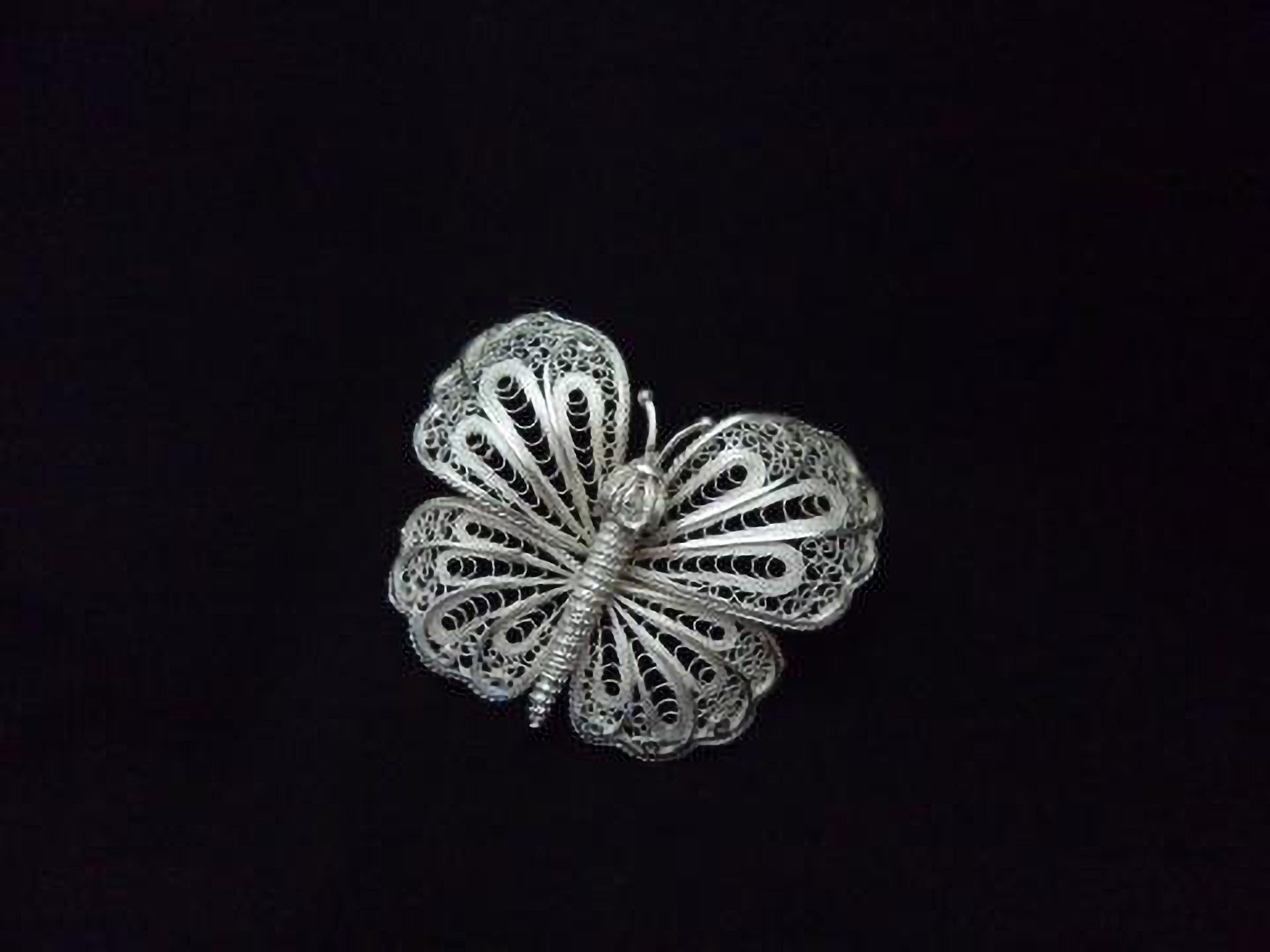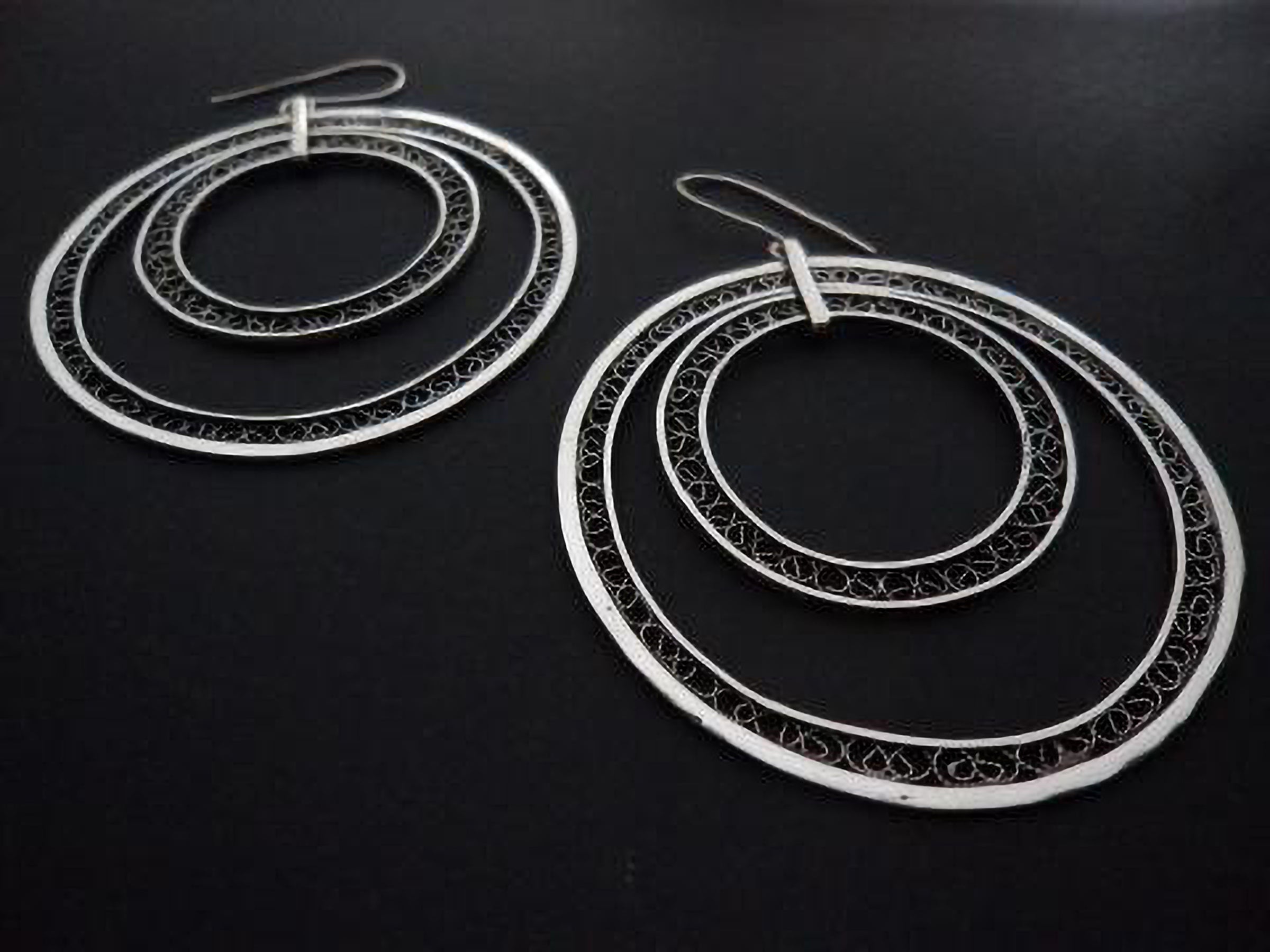
"My art is filigree art jewelry made of silver. This is a traditional family craft from my country of North Macedonia,” says silversmith Katarina Doda. One of the oldest techniques for jewelry making in the world, filigree is a delicate jewelry metalwork, usually of gold and silver, made with tiny beads and twisted threads soldered together. Doda explains, “The whole process is done by hand, using silver as the main material. Sometimes I use semi-precious stones such as amethyst, opal, red and white coral, or natural pearls. I start with melting silver using a special furnace, drawing a wire, and creating my own designs into jewelry. After I prepare material by drawing the silver wire, I start to realize my ideas and my designs. Finally there is cleaning the jewelry using different kinds of acids, polishing creams, and paints to make the finished piece.”

Doda’s family has passed this art down from generation to generation; growing up she was surrounded by it. “This is our family traditional craft and I am just continuing the family trade,” she says. “All my life I was in contact with filigree jewelry.” Her parents established a second business manufacturing the tools needed to create filigree and gold jewelry, as well as furnaces for melting gold and silver. Doda came up through the family business presenting her family’s products at fairs and exhibitions, but, she says, “My biggest wish was to make the jewelry. I started with machine-made jewelry but was never satisfied, so I decided to extend my family craft to keep with tradition. I had many ideas and many jewelry designs. Although I knew how to make filigree jewelry, in 2010 I started going to school to master the knowledge and gain new skills. After six months at school, I established my workshop, Filigree Workshop KD Jewelry.”
She continues, “I use many traditional motifs and designs of my country. In recent years, machine-made jewelry has flooded the market, putting our craft at risk. Filigree has become marginalized but has not lost its value or beauty. The reason I continue is to maintain our heritage and culture so it is not lost. We are recognized for our craft all around the world. The filigree butterfly brooch is one of the most representative pieces of jewelry from our region. This is our family’s traditional art, which is very difficult to make and requires a lot of patience and time. My love for filigree jewelry encourages me to continue our family tradition and it also gives me an opportunity to express myself as a designer.”

Doda emphasizes that each piece she creates is infused with emotion throughout the whole process. Positive emotion gives you the power to create the best pieces, and those pieces are recognized by the consumer. That is my challenge, to create unique pieces of filigree jewelry that give the consumer a feeling of happiness, fulfillment, and increased confidence,” she says, noting that Indigenous artists face many challenges in Macedonia. “The declining economic situation in my country impacts purchasing power. People recognize the value and beauty of filigree jewelry, but unfortunately they cannot afford to buy it.” She says that the government sometimes supports artists through grants, and that local craft chambers organize bazaars and art sales. “I’m part of the board of directors of the Skopje Craft Chamber and I organize several bazaars in Skopje, the capital of Macedonia, to help artists with access to markets,” she adds.
Doda has been showcasing her work for the past three years at the Cultural Survival Bazaars. “The Bazaars are a lot of help for me. They give me the opportunity to present my work in different locations in the U.S. It is an opportunity to see new places, learn about new cultures, and meet people from different parts of the world— this is the biggest inspiration for my work to create new models and new designs. Also, I can say that they financially support my work to continue my craft. Without them, it would be very difficult for me to continue. I would like to thank the organizers and specially thank all the volunteers who make the Bazaars happen.”
Meet Katarina Doda and see her work at our upcoming Cultural Survival Bazaars:
December 6–8: The Prudential Center, Boston, MA
December 14–15: Cambridge Rindge and Latin
School, Cambridge, MA
To learn more, visit: bazaar.cs.org

